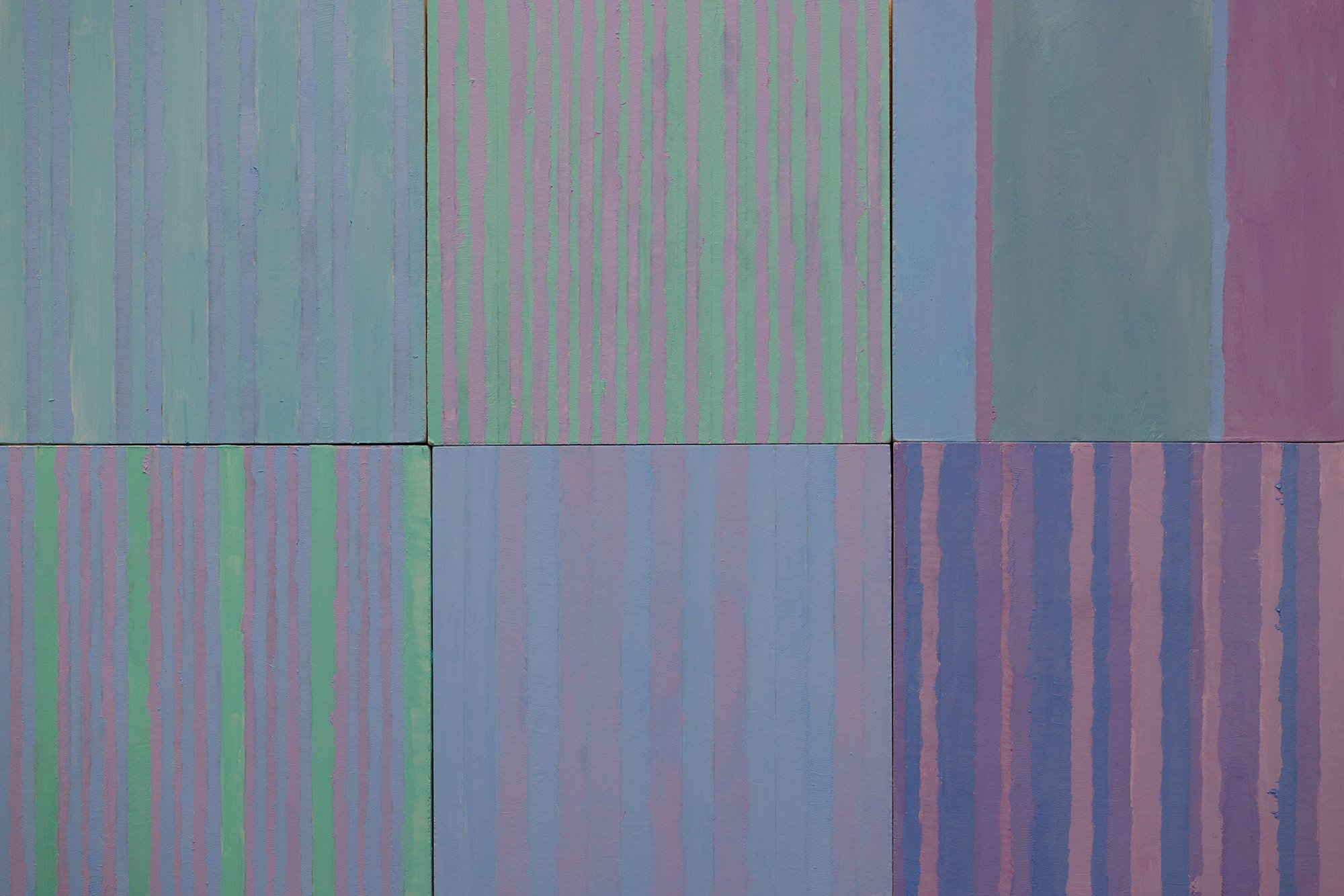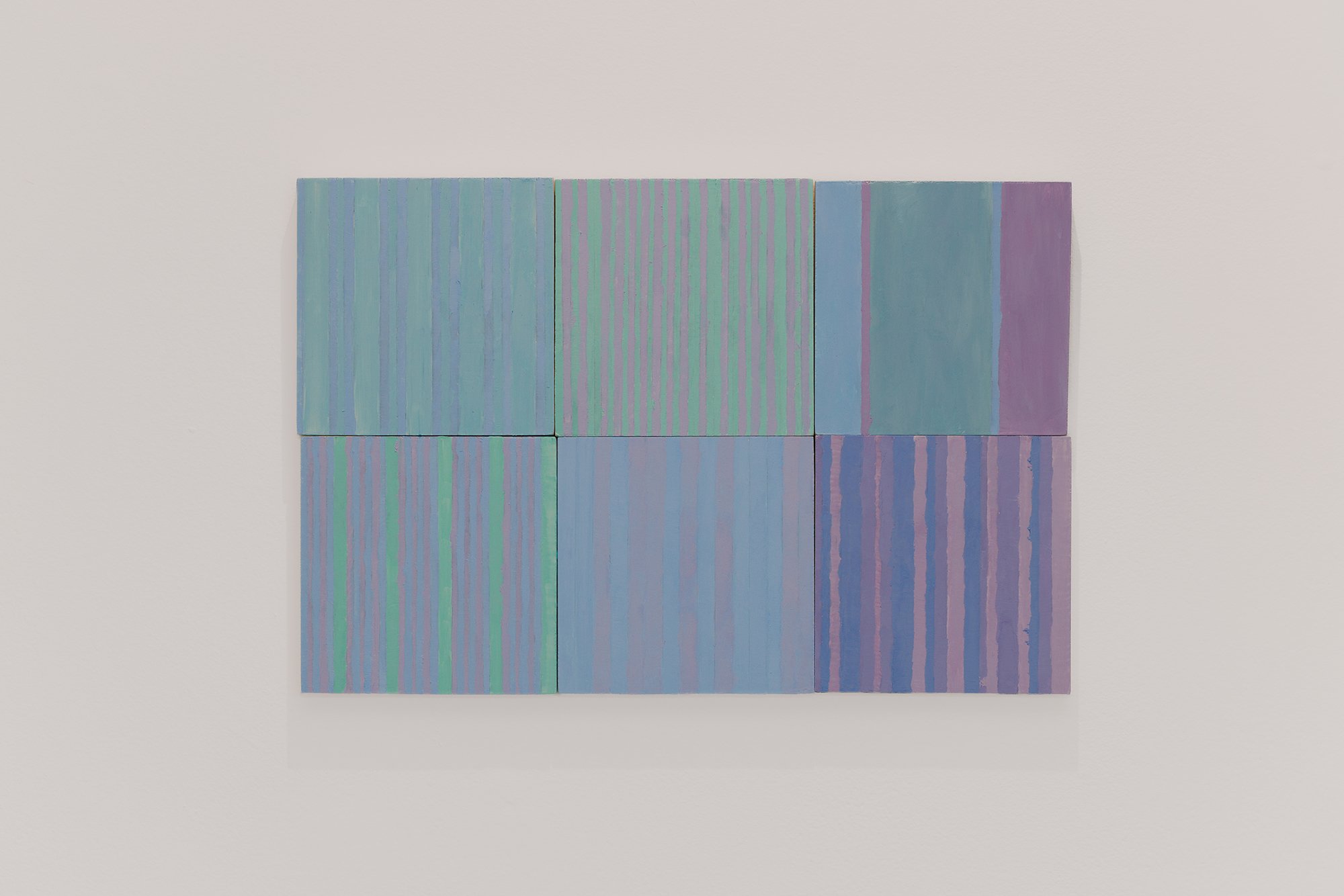
making beds inside post anchors by Nat Penney / particle wave by Nicole Clift
Nat Penney
Nat Penney is an artist based in Tarntanya (Adelaide). Nat attempts to contemplate the confusion induced by executive dysfunction and subsequent states of being overwhelmed, through a multidisciplinary practice that’s led by the innate need to continuously prove that she can. Having worked in several male-heavy fields, in metal and timber, Nat has discovered a somewhat sadistic exhilaration amidst the fury and exhaustion that comes with the constant challenge of having to prove herself. Frenzied thoughts and this ongoing hunt for the next trial, means her work has an ever-changing physicality, reflecting the latest skill tester and often ending unresolved. Restless, Nat creates intricately constructed and technically considered works that search for unexpected material combinations and making processes, resulting in awkward and humorous situations, often resulting in flip flopping moments that can be both discomforting and titillating. Her practice similarly bounces somewhere between functionality and uselessness, preferring not to settle on either, sifting through for an insight into productive pathways for making a practice that looks outward, that becomes more purposeful than itself.
Physical and mental exertion inform process, never settling and persistently pushing her limits as a fiendish mental coping mechanism, often resulting in awkward and humorous situations that can seem incongruous; confusing but suggestive of familiarity. Penney graduated from Adelaide College of the Arts with first class honours in 2017. She has exhibited at fab Workshop, Bus Projects, Praxis ARTSPACE, FELTspace, Glitch Experimental Artspace and Light Square Gallery. In 2018 she was selected by Helpmann Academy for a 6-week artist residency at Sanskriti Kendra Museums in India and for a 6-month studio residency at George Street Studios. Nat is now a Co-Director of fab Workshop (previously George Street Studios) where she works in metal fabrication and has a permanent studio.
I very rarely understand art (including the art produced by Nat Penney). And in fact, one of the things I like about Nat Penney’s work is that it can seem inexplicable. What is this construction of converging steel bars? Why is there a slot in the middle? It looks a bit to me like the frame of a helmet, viewed from inside. And why is a duster dusting the slot, over and over and over again? Nat Penney’s work often seems absurd, and always makes me laugh. It is quite unexpected to see a disembodied household object performing the same repetitive motion again and again and again, especially when it appears somewhere or does something you don’t anticipate. It’s funny, familiar, in a way fantastic.
I’ve always loved Penney’s fixation on everyday objects. Taking a certain view, one might describe life as the act of arranging things around you. Trying to control your environment. Failing to control your environment. Going around in circles like a brush on a motor for as long you have the energy to continue.
The table also intrigues me. There are words embossed that I can’t make sense of. Briefing me, Penney recounts a childhood incident where a tv table, the exact colour of the table in this exhibition, was unexpectedly painted white. She describes “feeling so thrown by what now seems a very insignificant change…that hadn’t been within my control”. The words are suddenly legible but I like that they didn’t make sense (and maybe couldn’t) without this memory being recounted.
The object resting on the table feels more organic than many of the works in the show. It is made of wood, not metal, and has an undulating, almost soothing quality in addition to a cute lil beak. Penney describes the sculpture as a dolphin (homework.study.com tells me it is therefore not a beak but a “rostrum”). Is the dolphin a calming counterpoint to the disruption that change presents? I’m not sure, but either way it looks very handsome perched where it is.
Many of the works seem to reference the ocean: “the spikey, wavy steel, leaf/boat/canoe” (Penney’s description, too beautiful+funny not to quote directly), the dolphin and the wave-y table, the shell tile, and even the steel standing sculpture (is the immensity of a view through a slot akin to staring into the endless ocean?) There’s a tension of sorts in the ocean (and life) for those of us who struggle with change. Uncertain, endless, and beyond our capacity to control. Also soothing. The horizon is flat and calm, the tides come and go and come and go, and the beach is right where you left it (unlike your home or your furniture, Port Willunga can’t move). It’s full of possibilities, and possibilities are at least partly about change.
Christopher Arblaster
Christopher Arblaster takes a lot of photos, occasionally arranges words, also struggles with change.

Nat Penney, the album of dolphin noises (detail), 2024, beech timber. Image courtesy of the artist

Nat Penney, my ‘my pretty mermaid’ bathed in the soap holder, then I cut all her yellow hair off and the bathroom was renovated’ (detail), 2024, powder-coated 1.6mm mild steel, stainless steel, earthenware with mandarin glaze, portable mp3 player
Nicole Clift
Nicole Clift is a visual artist and writer based in Tarntanya/Adelaide. Nicole works across oil painting, tapestry weaving and installation to create works that quietly allude to the intangible and invisible structures that make up our reality.
Nicole completed her Honours in Visual Arts (First Class) as a scholarship recipient at Adelaide Central School of Art in 2019. Nicole has exhibited widely in South Australia, and currently makes from her studio at Central Studios, Kent Town.
particle wave, as Nicole points out, refers to how light behaves as particles and as waves simultaneously - rather than one or the other. particle wave also refers to painting, and the making of paintings concerned with interactions of light and colour. But there’s also interest here in edges and matter, scales of reality, surface tension, systems of organisation, and paradoxes of the macro/micro universe. particle wave embraces all this stuff, equally.
Initially I found it odd for Nicole to ask if I would write a few words to accompany this show. Working with her as an honours’ supervisor some years ago, our weekly studio meetups were often spent speculating on a type of creative practice that actively searches out spaces where words do not meet, or no longer hold power over the stuff that emerges from them. At best, words might form an analogue with the work, which then becomes a new work, calling for further speculation, and so on …
It seemed right, when Nicole’s studio activity found its way into places where words could only approximate a sense of what might really be going on. Witnessing the work move beyond the limitations of descriptive language was a curious thing, particularly within an educational environment that encourages a clear context, articulation, and defence of one’s actions. Yet, it seemed the messier the articulation got, the more it resonated with the work’s integrity. A clear sense of value in this strange art endeavour lay between the lines of failed attempts to articulate its meaning.
In one way, this show is also given over to the spaces ‘between the lines’. Spaces embodied via painterly engagements in time and attention. The fun part of this game is in the realisation that the spaces between lines are mostly lines themselves. Not just lines of text and ideas, but of matter and movement. This is a painting show after all, and we are looking at stuff consciously made with paint on canvas; a painting’s materiality and process is seen as the most authentic medium to simultaneously address concerns relating to light, matter and everything in-between.
‘Spending time with’ and ‘attending to’ are central tenets in Nicole’s practice (and very helpful modes for viewing the work). Artists employ these intentions in their practice to differing degrees, but when they are foregrounded as the work, then strange things can happen; fiction and reality intertwine and there is a freeing up of concerns for producing anything other than the residue of the work’s intent.
In this instance, the painted line that is attended to acts as a kind of marker of energy: an action, not a symbol. There’s a sense of slowly, consistently pushing the material of paint about across a living surface pathway. One can imagine observing the paint as it cautiously nudges itself up against the wobbly edge of the previous complimentary hued line, producing a chromatic vibration at its meeting edge. This edge becomes yet another line within a series of corresponding time-lines resonating on multiple tactile, optical and temporal planes.
These meetings are suggestive of a continually evolving practice. In visual terms the lines travel beyond the edges of the picture plane, hinting toward infinite scaling and repetition. In practical terms, the canvas is a set physical scale, the paint can only travel so far before falling off into space. Space, which then becomes acknowledged as a thing made visible by its encapsulation within fragile, lamp-worked glass bubbles. These small pockets of air, nestled, supported, particle wave by Nicole Clift. 8th of May – 8th of June, 2024 or perhaps hemmed-in between the edges of the two painted canvases bring attention to the object nature of the painting.
Nicole’s play with the formal conventions of the picture plane, as both a physical surface and as a window into another reality is continually acknowledged and negated throughout the work. Paint, gesture, colour and tone as well as opacity and invisibility entangle to embrace and foster paradoxical situations. The paintings we see are residual matter born from ever evolving speculations on ideas that largely fall outside the material realm.
Singular approaches or viewpoints have little traction in Nicole’s world; here, the studio is a site of convergence, where all elements get to play simultaneously.
Michael Kutschbach

Nicole Clift, particle wave (series), 2024, oil on gesso board, 15x15x2cm each. Photo Rosina Possingham.


